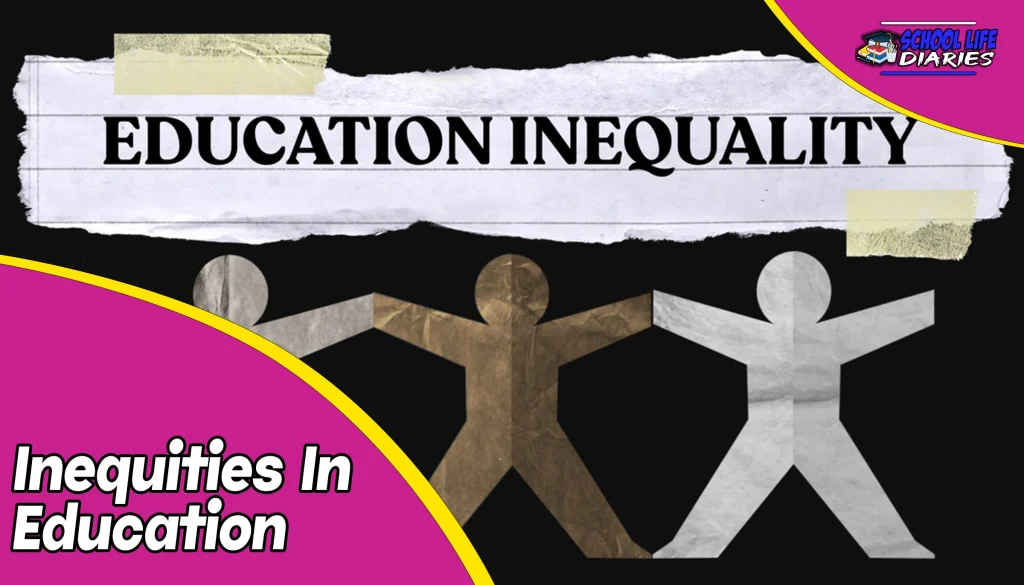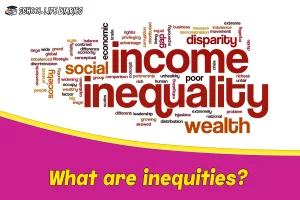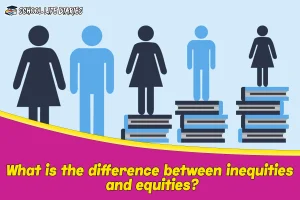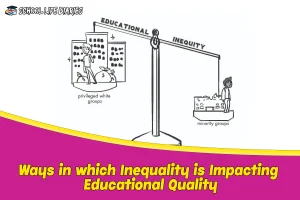Inequities in education are a pressing issue that demands attention and action. The importance of addressing these inequities lies in recognizing the impact they have on the quality of education and, ultimately, on the future prospects of individuals and society as a whole.
In this article, we will explore what inequities in education entail, how they differ from equities, and why it is crucial to understand their implications. When we talk about inequities in education, we refer to the unequal distribution of resources, opportunities, and support systems within educational settings. These disparities can arise from various factors such as socioeconomic status, race or ethnicity, gender, disability status, or geographic location.
It Is important to note that inequity should not be confused with inequality. While both terms denote a lack of fairness or equal treatment, inequality refers to differences that may be justified based on individual merit or effort. In contrast, inequity highlights systemic barriers that hinder certain individuals or groups from accessing the same educational opportunities as others.
What are inequities?
Inequities in education refer to disparities and unequal access to educational resources, opportunities, and outcomes among different groups of students. These inequities can manifest in various forms, such as differences in funding for schools, quality of teachers, curriculum offerings, and extracurricular activities. They often result in unequal educational experiences and hinder the academic success of marginalized students.
One major cause of educational inequities is socioeconomic status. Students from low-income families often attend underfunded schools with limited resources and outdated facilities. This lack of financial support affects their access to quality education, including advanced courses, technology tools, and well-trained teachers. As a result, these students face significant barriers that impede their academic growth and limit their future opportunities.
Addressing educational inequities requires comprehensive solutions at multiple levels. At the systemic level, policymakers should prioritize equitable distribution of funding across schools to bridge resource gaps. Additionally, investing in professional development programs for teachers can improve instructional practices and ensure high-quality education for all students.
Why inequities is important in education?
Disparities in access to resources and opportunities within educational systems can have profound implications for students’ future success. The importance of addressing these inequities lies in the fact that education is a fundamental right and a key determinant of social mobility. When some students are denied equal access to quality education, it perpetuates cycles of poverty, inequality, and limited opportunities.
The impact of inequities in education is far-reaching. Students from marginalized communities often face inadequate funding for schools, outdated infrastructure, limited access to technology, and a lack of qualified teachers. These disparities create an uneven playing field where some students receive a substandard education while others benefit from comprehensive learning environments. As a result, disadvantaged students may struggle academically, leading to lower graduation rates and reduced chances of pursuing higher education or securing well-paying jobs.
Addressing these inequities requires comprehensive solutions that tackle both systemic and individual-level factors. At the systemic level, governments must prioritize equitable distribution of resources by investing in underprivileged schools and ensuring they have adequate facilities, materials, technology, and well-trained educators.
What is the difference between inequities and equities?
One key distinction between inequities and equities lies in the fair distribution of resources and opportunities within a given system. Inequities refer to the existing disparities or inequalities that exist in education, where certain groups or individuals have limited access to quality education, resources, and opportunities. The difference between these two concepts is crucial as it highlights the importance of addressing inequities in education.
The difference between inequities and equities is significant due to the impact it has on individuals’ lives and society as a whole. Inequities in education can result in unequal outcomes for students from different backgrounds. It can perpetuate cycles of poverty, limit social mobility, and contribute to societal divisions based on socioeconomic status, race, or gender.
Recognizing the difference between inequities and equities is essential because addressing educational inequities requires targeted interventions that specifically cater to marginalized groups or communities with limited resources or opportunities. By identifying these disparities through data-driven approaches such as analyzing achievement gaps or studying dropout rates among different student populations, policymakers can implement effective strategies that promote equity in education.
How Does Inequality Affect Access to Quality Education?
Inequality undermines access to quality education and perpetuates societal divisions, hindering social progress and economic growth. One of the key factors contributing to educational inequality is the impact of socioeconomic status on education. Students from low-income backgrounds often face numerous barriers when it comes to accessing educational opportunities. Limited financial resources can result in inadequate school facilities, outdated teaching materials, and a lack of extracurricular activities that enhance learning experiences.
Another significant aspect that exacerbates educational inequality is the effects of resource allocation on educational opportunities. In many cases, schools located in economically deprived areas receive fewer resources compared to those in affluent neighborhoods. This disparity in resource allocation can lead to overcrowded classrooms, high student-to-teacher ratios, and a shortage of qualified educators. The consequences of inequities in education extend beyond individual students’ lives; they have far-reaching implications for society as a whole. Educational disparities perpetuate social divisions by limiting opportunities for upward mobility and reinforcing existing inequalities.
Ways in which Inequality is Impacting Educational Quality
The impact of unequal distribution of resources can be seen in overcrowded classrooms, high student-to-teacher ratios, and a shortage of qualified educators in schools located in economically deprived areas. These disparities have a significant effect on the quality of education received by students. In economically disadvantaged communities, poverty often results in limited funding for schools, leading to inadequate facilities and outdated educational materials.
Minority students are more likely to attend underfunded schools with fewer resources compared to their white counterparts. This disparity creates an environment where students from marginalized communities face additional barriers to receiving a quality education. Limited access to technology, extracurricular activities, and advanced courses further exacerbate these inequities.
Teacher quality is another critical factor impacted by inequality in education. Schools located in economically deprived areas often struggle to attract and retain highly qualified educators due to low salaries and a lack of professional development opportunities. Consequently, students attending these schools may have limited exposure to experienced teachers who can effectively engage and inspire them academically.
What role does school funding play in educational inequities?
School funding is a crucial factor that contributes to the perpetuation of educational disparities by amplifying the resource gap between economically advantaged and disadvantaged schools. The role of government in distributing funds has a significant impact on the quality of education provided. Schools in low-income communities often lack sufficient resources and infrastructure, leading to limited access to quality education. This further widens the achievement gap between students from different socioeconomic backgrounds.
The impact of socioeconomic status on school funding is undeniable. Schools located in affluent neighborhoods have access to higher property taxes, which directly contribute to their larger budgets. These schools are able to offer a wide range of extracurricular activities, advanced courses, and well-equipped facilities that enhance the learning experience for their students. On the other hand, schools in economically disadvantaged areas struggle with insufficient funds, resulting in overcrowded classrooms, outdated textbooks, and limited technology resources.
Teacher quality also plays a crucial role in educational inequities affected by school funding. Research has consistently shown that highly qualified and experienced teachers significantly improve student outcomes. However, due to budget constraints, financially deprived schools often struggle to attract and retain talented educators. As a result, students attending these schools may not receive the same level of instruction as their peers in wealthier districts.
School funding is an essential aspect contributing to educational inequities. The role of government in distributing funds should aim at reducing disparities rather than exacerbating them further. Addressing these inequalities requires not only equitable allocation of resources but also investing in teacher training and support systems for economically disadvantaged schools. Only through such comprehensive efforts can we ensure equal opportunities for all students regardless of their socioeconomic background or location.
What is the impact of discriminatory policies on educational inequities?
Discriminatory policies have a profound impact on the perpetuation of educational disparities, instilling a sense of injustice and hopelessness among marginalized students. These policies create barriers that hinder equal access to quality education, exacerbating existing inequities. One significant impact is the limited resources allocated to schools in disadvantaged communities. Discriminatory policies often result in unequal school funding, with schools serving marginalized students receiving fewer resources compared to their more affluent counterparts.
Another impact of discriminatory policies on educational inequities is the perpetuation of stereotypes and biases that negatively affect marginalized students’ academic achievement. Biased disciplinary practices disproportionately target minority students, leading to higher suspension rates and exclusion from learning environments.
Discriminatory policies significantly contribute to educational inequities by creating barriers that limit access to quality education for marginalized students. Insufficient school funding, segregation within schools based on socioeconomic factors, and biased disciplinary practices all serve as obstacles preventing equitable opportunities for learning.
How can policymakers address educational inequities?
Policymakers must proactively implement comprehensive reforms to dismantle systemic barriers and promote equitable access to educational opportunities for all students, fostering a society that values diversity and empowers marginalized communities.
Addressing disparities in education requires policymakers to adopt a multifaceted approach that encompasses various strategies and initiatives. Education reforms are crucial in addressing inequities in education. Policymakers must work towards creating inclusive curricula that reflect diverse perspectives and histories. By incorporating culturally relevant content into the curriculum, policymakers can ensure that students from marginalized communities see themselves represented and empowered within their educational journey.
This includes reevaluating admission processes to reduce bias and increase opportunities for historically marginalized groups. Policies should be implemented to eliminate disciplinary disparities that disproportionately affect students of color or those with disabilities. By adopting restorative justice practices instead of punitive measures, educators can create a more inclusive environment where all students feel safe and supported.
What are some successful strategies or interventions to reduce educational inequities?
One effective approach to addressing disparities in educational outcomes involves implementing targeted interventions and support programs for students from marginalized backgrounds. These successful interventions aim to reduce inequities by providing additional resources, support, and opportunities to students who may face barriers to their education.
Another effective strategy for reducing educational inequities is the implementation of comprehensive community schools. Community schools go beyond traditional schooling by offering a range of wraparound services that address the various needs of students and their families. These services can include healthcare, mental health counseling, after-school programs, and family engagement initiatives.
Successful strategies and interventions aimed at reducing educational inequities involve implementing targeted support programs such as early childhood education initiatives, comprehensive community schools, and mentorship programs. By addressing the specific needs of marginalized students through these interventions, we can create more equitable learning environments where all learners have an equal opportunity to succeed academically.
These strategies not only provide additional resources and support but also foster a sense of belonging and empowerment among students from marginalized backgrounds, enabling them to reach their full potential.
Conclusion
In conclusion, addressing educational inequities is of utmost importance in order to ensure equal access to quality education for all students. These inequities, which refer to the disparities and injustices present in the education system, have significant consequences on students’ academic outcomes and future opportunities. Inequities can manifest in various forms such as unequal distribution of resources, discriminatory policies, and lack of funding.
The impact of inequality on access to quality education cannot be underestimated. It hinders students from marginalized backgrounds from acquiring the necessary skills and knowledge needed for their personal and professional development. To address these issues, policymakers must prioritize creating a more equitable education system through targeted interventions. This may include implementing inclusive policies that promote diversity and provide equal opportunities for all students.
Successful strategies to reduce educational inequities involve providing additional support such as tutoring programs or mentorship initiatives for underprivileged students. Overall, recognizing the importance of addressing educational inequities is crucial for building a more just society where every student has an equal chance at success. By striving towards equity in education, we can empower individuals regardless of their background and pave the way for a brighter future for all.









